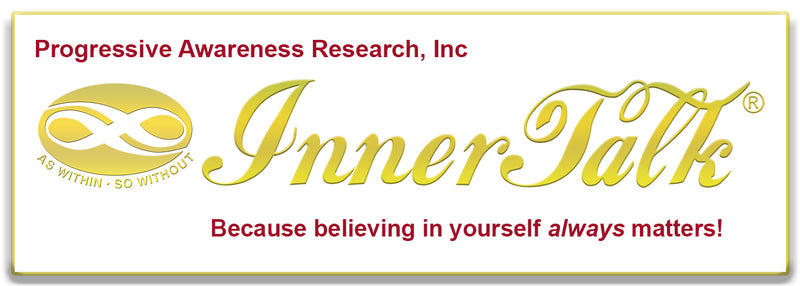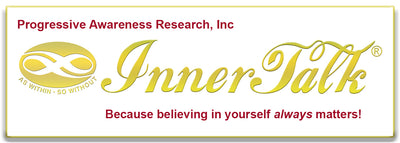Do Subliminal Self-Help Programs Work? (9) - Scientific Findings
The Clinical And Scientific Findings
Of The Taylor Method

Earlier, and in my other works, I have discussed the history and general science of subliminal communication (see Subliminal Learning, Subliminal Communication, and Thinking Without Thinking). This section will not review that material. It will briefly present clinical and experimental findings based on one technology in one method of delivery. I developed and researched this technology. Others have researched it.
Details of every study could bog the reader down. Mercifully, I will present only the main findings. The end of this chapter completely lists the articles so you may look them up yourself if you wish.
My apologies to any reader, who finds this method either overlong or incomplete. Nevertheless, this section is not intended to be a clinical guide, a case study collection or a permanent reference work. It is intended to defer to a reader’s right to know where to get the raw hard data that supports my assertions.
Under the direction of Dr. Jose Salvador Hernandez Gonzalez and on behalf of the Department of Social Security for Mexico, 25 patients were exposed to both video and audio Freedom From Dental Anxiety audio programs for thirty minutes prior to treatment and thirty minutes during treatment. The conclusion: “. . . the use of InnerTalk before an integral odontologic treatment is 100% effective, reducing patient’s anxiety and the noise made by the high speed hand piece used in this type of work, and furthermore, reducing the pain suffered by comparison to previous experience.” The report goes on to recommend InnerTalk: “Therefore it is convenient to promote, among Dental Surgeons, the use of InnerTalk to improve their patients comfort and achieve a better collaboration to treatments.”
Combining Whole Brain InnerTalk Weight Loss audio and video programs with an Echo-Talk audio program and a special nutritional program developed and marketed by Oxyfresh International, Dr. Harbans S. Sraon, (a biochemical geneticist of the University of California at Irvine) conducted a ninety day weight loss study. Dr. Sraon coached each subject to visualize their clear goal in terms of body fitness and reviewed progress weekly. Sraon reported that 90% of the subjects (10 men and 15 women) lost significant weight.
Under the direction of Maurice P. Shuman, Jr., General Director Special Programs of Instruction, a pilot study was conducted by Duval County Public School System at the Pre- Trial Detention Center in Jacksonville, Florida. Twenty-two incarcerated juveniles participated in a study program using InnerTalk audio programs designed to assist in preparation for GED examination. The GED final test results show that 18 of the 22 troubled students passed the full GED examination. A follow-up study is currently underway in the same facility.
Thomas Plant, faculty member of Stanford University and Director of the mental health services for the Children’s Health Council, together with Michael DiGregorio, Gerdenio Manuel and Bao-Tran Doan of Santa Clara University, evaluated the effect of Whole Brain InnerTalk on test anxiety in a double-blind experiment. The statistical data significantly supported the hypothesis that Whole Brain subliminal technology could be an effective tool in lowering test anxiety.
Kim Roche of Phoenix University studied the effect of Whole Brain InnerTalk with children diagnosed as having Attention Deficit Hyperactive Disorder in a double-blind experiment. Her findings indicated a significant positive effect.
Diana Ashley at the University Of Southern California studied the effect of Whole Brain on academic achievement in a double-blind experiment. Her conclusion found a significant increase in learning among students in the experimental group.
A study carried out by Prof. Pelka of Munich University in Germany on a Whole Brain audio program for weight loss, showed average weight losses of 13 pounds in subjects who used the program.
The findings from a longitudinal study on the Whole Brain InnerTalk program for Cancer showed that 43% of the patients who used the program went into remission. For the other patients, who eventually passed away, the average life span beyond the original prognosis was significantly extended.
Experimental psychologist Julian Isaacs investigated the effects of the following Whole Brain InnerTalk programs: No More Procrastination, Time Management, Confidence Power, Freedom From Stress, Positive Relationships, I Am Assertive, and High Self Esteem. After three studies, it was concluded that the programs produced significant positive results that were verifiable.
A double-blind study conducted by Prof. Peter Kruse at Bremen University in Germany, using a specially created Whole Brain InnerTalk program, strongly demonstrated the influence of the program on decision-making. Kruse said, “The Taylor Method” works!
A double-blind study was carried out at Weber State University on the effects of the Whole Brain InnerTalk program, Freedom From Stress. The psychological test results showed a significant decrease in stress.
In a double-blind study carried out at Colorado State University, it was found that using the Whole Brain InnerTalk program, Freedom From Depression, for more than 17 hours, led to a significant decrease on the Beck Depression scale. This study not only shows the effectiveness of the Whole Brain program, but also indicated that the effectiveness of the programs was dosage related.
Cosmetic Surgeon R. Youngblood and surgical staff tested the effect of the Whole Brain InnerTalk Pre And Post Operative audio program on 360 patients. They reported a decrease in anesthetic requirements of 32% by volume as compared to a historical control group.
In a double-blind study at the Utah State Prison, which was performed by McCusker, Liston and Taylor, the Whole Brain technology was deemed effective in altering self-esteem among inmates. As a result, the Utah State Prison installed and maintains a voluntary InnerTalk audio library for inmates.
Numerous clinical studies with single and multiple subjects have also found effectiveness with Whole Brain in areas as diverse as anorexia to dyslexia. Additionally, Whole Brain has been credited by professional coaches for significantly contributing to winning sports events ranging from football championships to National and Olympic judo medals.
Listing of Research Papers
Ashley, D. “The Effect of Subliminally-Presented Reinforcing Stimuli on Factual Material.” University of Southern California. 1993.
Galbraith, P. & Barton, B. “Subliminal Relaxation: Myth or Method.” Weber State University. 1990.
Gonzalez, J.S.H. Unpublished report. 1998.
Isaacs, J. Unpublished report. 1991.
Kruse, P. et. al. “Suggestion and Perceptual Instability: Auditory Subliminal Influences.” Bremen University, Germany. 1991.
Pelka, R. “Application of Subliminal Therapy to Over-Weight Subjects.” Armed Forces University. Munich, Germany. 1993.
Plante, T.G., Doan, B.T., DiGregorio, M.P., and Manuel, G.M. “The Influence of Aerobic Exercise and Relaxation Training on Coping With Test-Taking Anxiety.” Stanford University and Santa Clara University. 1993.
Reid, J. “Free of Depression Subliminal Tape Study.” Colorado State University. 1990.
Roche, K. “The Effect of a Whole Brain Subliminal Program on Children Diagnosed with Attention Deficit Hyperactive Disorder.” Phoenix University. 1993.
Sraon, H.S. “Weight Loss Study Produces Early Success.” Oxygram. Vol 13, Issue II. Dec. 1997.
Taylor, E. “The Effect of Subliminal Auditory Stimuli in a Surgical Setting Involving Anesthetic Requirements.” St. John’s University. 1990.
Taylor, E., McCusker, C. and Liston, L., “A Study of the Effects of Subliminal Communication on Inmates at the Utah State Prison.” Subliminal Communication. Second Edition, R.K. Books: Medical Lake, WA. 1990.
Taylor, E. & McCusker, C. “The Use of Subliminal Auditory Stimuli in Terminally Ill Oncology Patients.” International Journal of Alternative and Complimentary Medicine. Feb. 1995.

